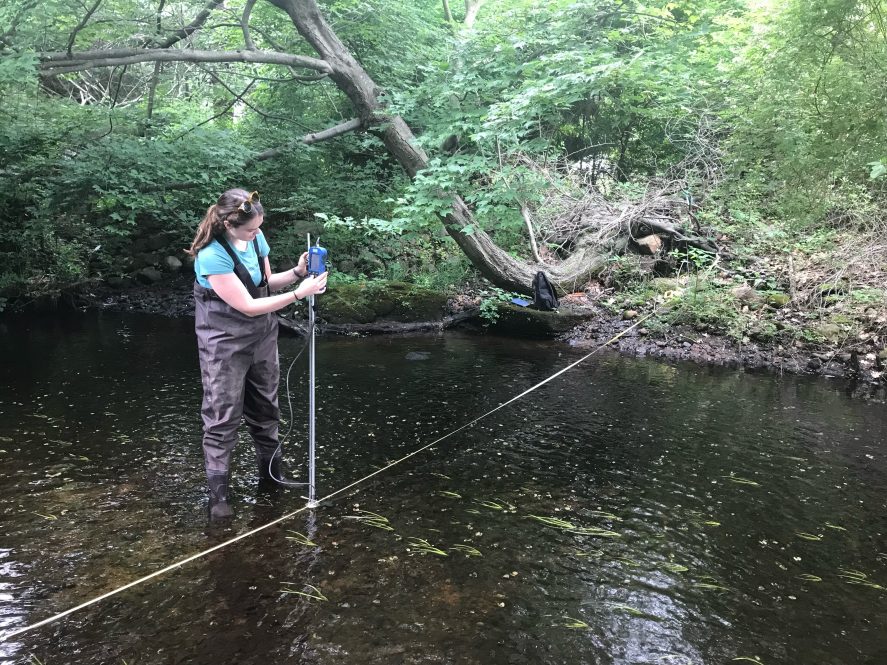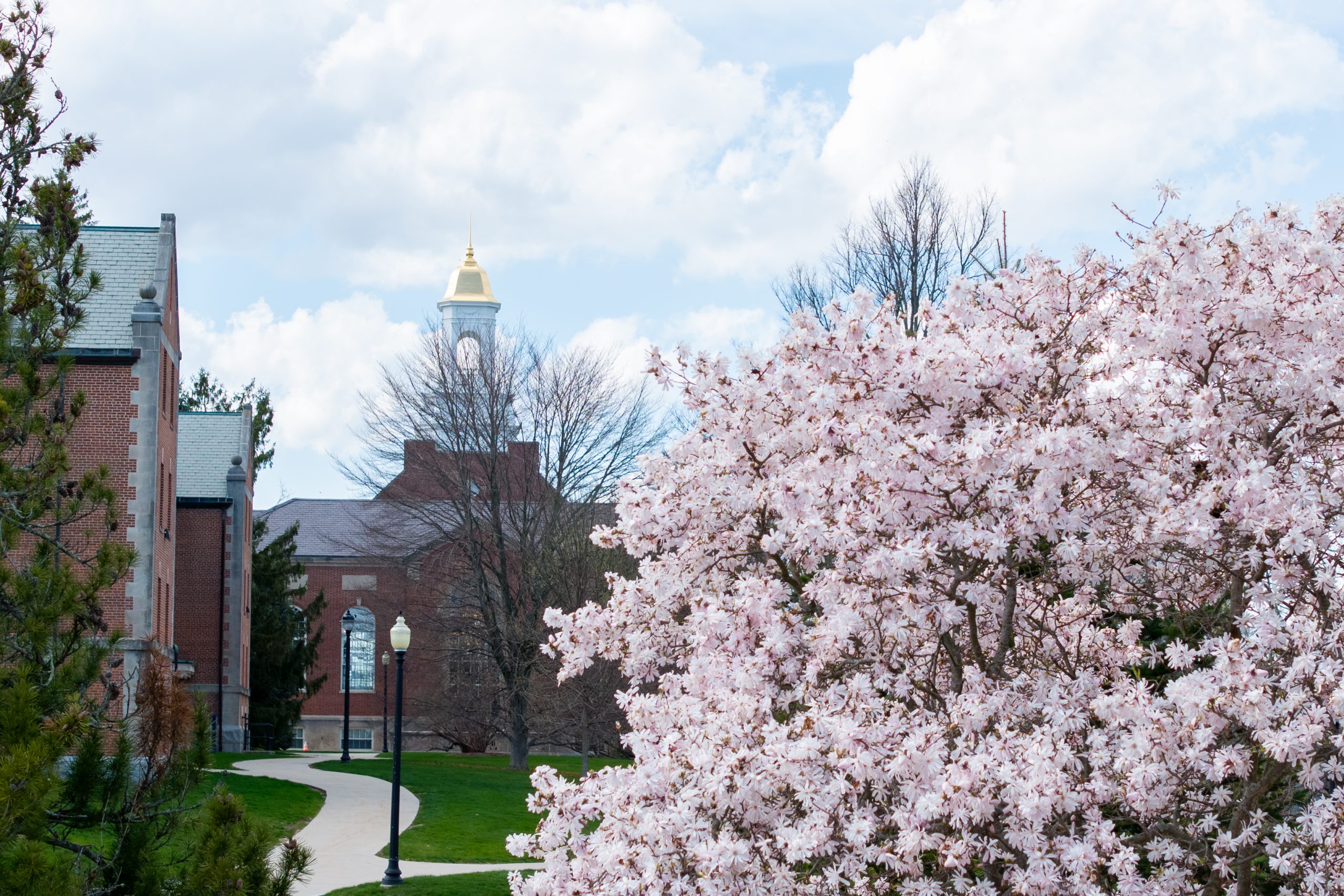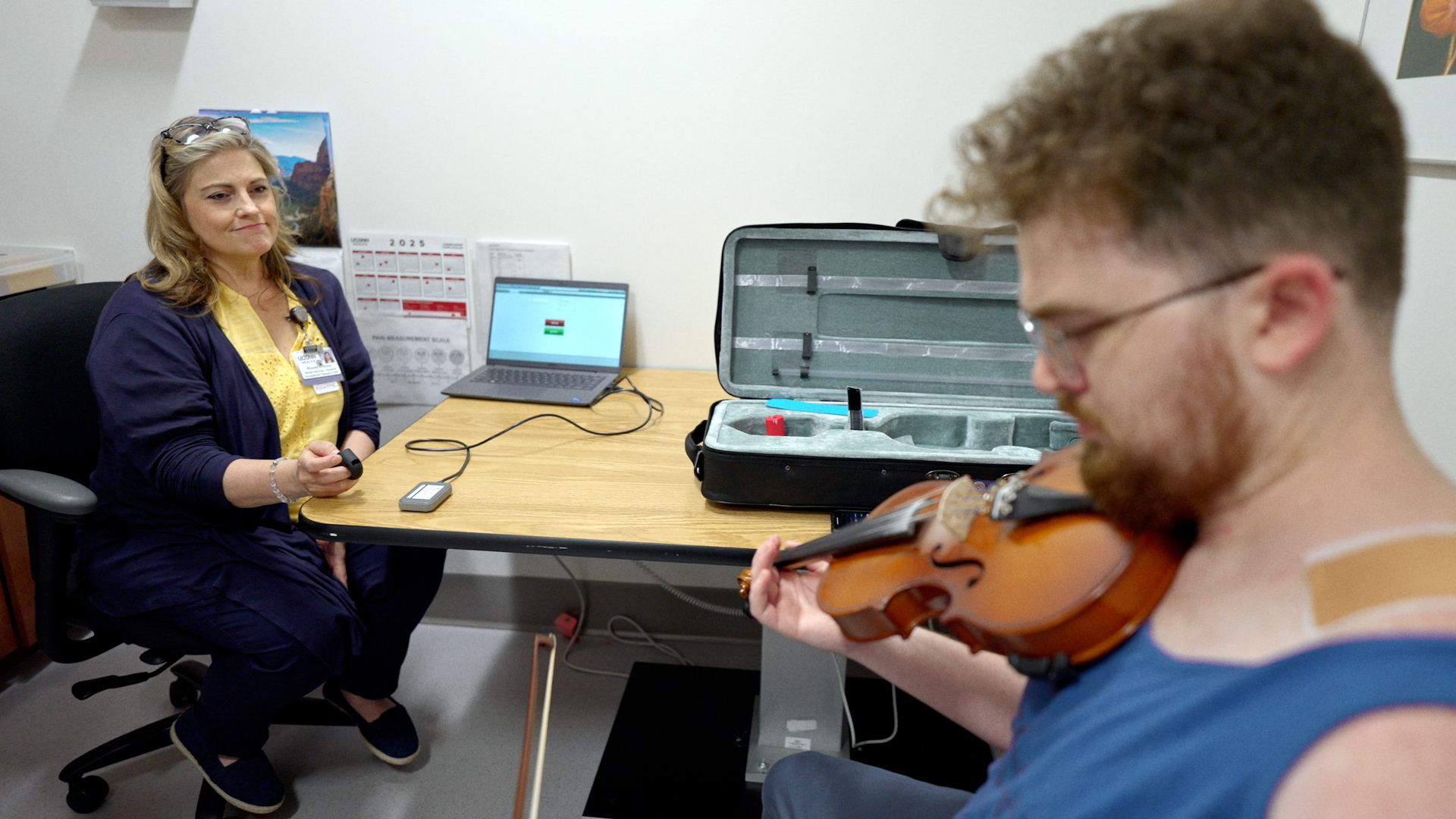River herring once swam up Connecticut’s streams to reproduce by the billion, and then reverse their journey back to sea. In recent years, though, their migration has become increasingly perilous, and their numbers have plummeted. Obstructions like dams have been added to many of the streams and rivers and the population has been drastically overfished.
Though the cards are stacked against the already threatened population of river herring, UConn researchers are working to learn more about the habits of alewives, a type of river herring, and the hydrology of the streams and rivers that lead to their ancestral spawning grounds, including whether the fish can get out of the lakes and ponds where they reproduce.
Swimming Upstream
River herring are an ecologically significant component of both fresh and saltwater food webs in Connecticut. They serve as a significant source of food for many species, and they cycle an enormous amount of nutrients around the ecosystem, says Eric Schultz, a professor in the Department of Ecology and Evolutionary Biology whose research group studies river herring.
Humans have made an already labor-intensive migration much worse. Measures to help restore migratory routes include removing impediments, like dams, or building structures to facilitate migration, like fish ladders or improved culverts, in efforts to try to make the systems function closer to the way they should, says Schultz.
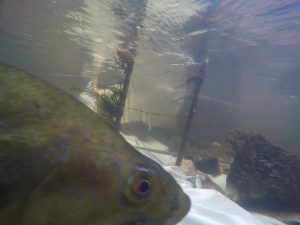
These efforts help get the adults into freshwater areas where they can reproduce and efforts are made to stock ponds, but surprisingly little is known about how the young fish get back to the sea, says Schultz.
“Now we are putting a lot of effort into monitoring these populations,” he says. “The title of the project is, ‘Can they get out?’ We know some sites that are important avenues for the baby fish to leave the lakes and go into the ocean, we also know that those streams dry up and the link is broken.”
If the effort is put into getting adults to freshwater, Schultz says, it could be to no avail if streams dry up, as some have in 2022.
What else can be done? This is what led Schultz to reach out to hydrologists James Knighton, assistant professor in the Department of Natural Resources and the Environment, and Katherine King ’23 MS.
“Our side of the project is measuring stream flow where water is coming out of the ponds where these fish spawn and building models of the systems to simulate how rain falling onto the Earth’s surface turns into streamflow,” says Knighton.
The measurements and observations taken over the past two years will be used to calibrate models which will be used to run synthetic, hypothetical climate scenarios to estimate the risk of loss of flow and potential stranding events for the fish.
“The project is very fortunate actually that we currently have this huge drought in 2022 because we ended up seeing exactly what we were worried about,” says Knighton. “To answer the big question, for this year, no, the fish could not get out at one of these sites. I think the bigger question is, will this become more common and what is the risk in any given year?”
Schultz points out that climate models suggest that droughts such as the one we’re having will become more frequent. The computer modeling will lend insights into the extent to which these interruptions in flow will impact the success of fry born in a particular year, called a “year class.”
Data on Fish Out of Water
Mike Burgess MS ‘23 has been taking continuous observations and measurements of the fish from several field locations across the coast of Connecticut from Old Saybrook to Mystic. Time-lapse cameras capture the fish leaving the locations with a picture taken every minute, 24/7.
Burgess checks the locations and changes memory cards every two days, which also means he can keep a close eye on the sites and take biological samples from fish that are leaving.
“We assume that after a drought like this, as soon as they have access to leave, they’re going to go no matter what,” Burgess says. “I am monitoring them leaving, assessing the environmental factors that are pushing them out, as well as the factors internally in the fish that might be influencing them to leave.”
Burgess says the near-nightmare scenario of 2022’s drought, though unfortunate for this year’s class of juveniles, provides important data for the second part of his project — modeling what will happen in the long run.
To do this, Burgess is working to modify an existing code structure that models the alewife lifecycle from the egg until age nine.
“We’re going to try to modify the portion of the cycle where the fish are migrating from lake to river and incorporate the drought data and see if we can predict what kind of outcomes might come from varying hypothetical drought scenarios.”
Early Warning
King says the modeling tool the researchers are constructing will be important for wildlife and resource managers who can make informed decisions.
“Part of the reason we’re working on this tool is to bring these factors together and indicate the chances of losing flow, or at least migration based on flow, at some point in the season. The idea behind that is to let managers know ahead of time what that chance is, and if it is a high chance, they can modify water usage, amounts, or practices, whether they’re releasing water from dams at different times during the year or withdrawing waters from rivers or reservoirs which has a huge impact on flow rates.”
There are other measures that can be taken to help with flow, such as green infrastructure, Knighton says:
“There are different ways to manage stormwater to help rain slowly infiltrate into soils after rain events which is better for recharging the water table and will sustain streamflow. The more rain that can infiltrate and not run off the impervious surfaces, the better.”
Burgess notes that heavy municipal water use at some sites has clearly caused heavy fish mortality. Significant numbers of fish have been able to leave their lake but are then unable to reach the ocean and die, stranded, in the drying stream. Communication is vital in preserving the juveniles that are left.
In addition to short-term interventions like modifying usage or amount of water released from dams, there are critical long-term decisions that need to be well informed says Schultz, namely planning and development.
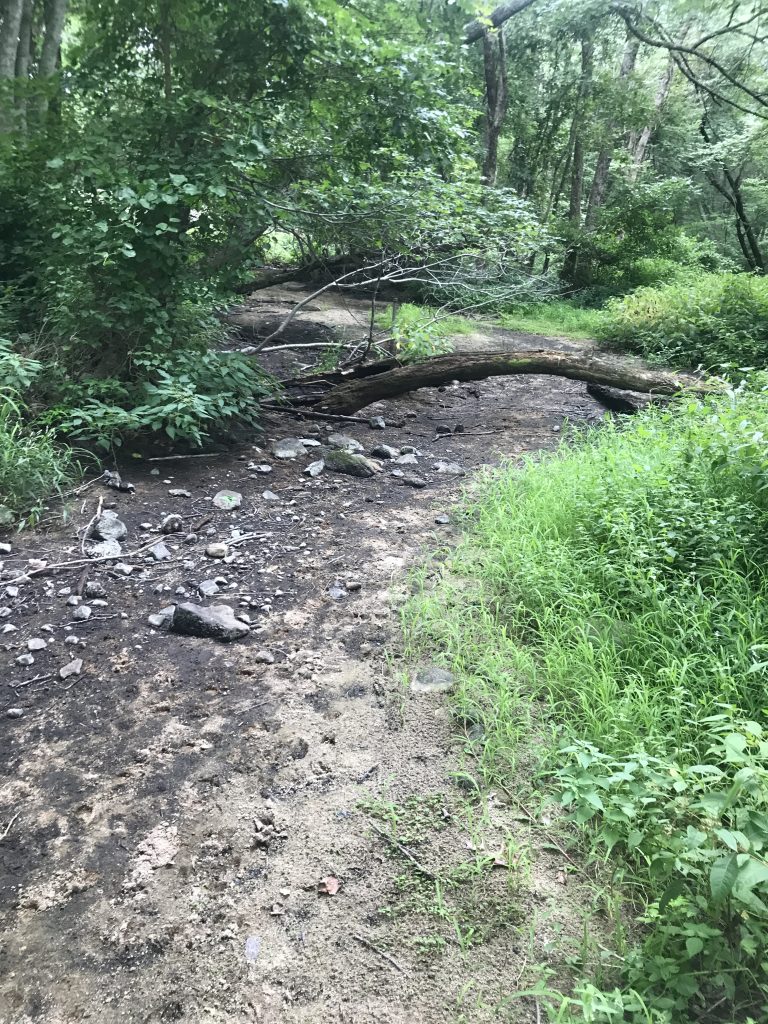
“For instance, we’ve heard that a big condominium complex is planned for an area in a watershed close to one of our critical sites. It mystifies us that they can go ahead with this, even when they recognize and it’s obvious that year after year, this site has water problems.
King and Knighton point out the big culprit — household water usage. The more water that people pump out of groundwater-fed wells, the less water there is available to recharge streams.
“Issues with water supply have to do with people in their own individual usage, but we can be more strategic with the management of these resources so that we don’t have those negative effects,” says King.
This gets at an important point at the heart of this research, says Schultz.
“It is critical to understand how we’re affecting life and how we’re affecting humans more indirectly because while humans need water, they also need functioning aquatic ecosystems,” he says. “The purpose of projects like this is to provide decision-makers with the information they need to determine what kinds of structures are needed to sustain life and to do this while also focusing on components of the ecosystem that really are in trouble.”
With current, prolonged dry conditions, the groundwater levels around CT are 10 feet below where they should be says Knighton, and that’s going to take more than a rainy day or two to recharge, but the northeastern U.S. is fortunate that the region typically gets enough snow to recharge groundwater levels each winter.
“Usually, the winter resets everything but as we start to lose snowpack, I don’t know if that’s something we can rely on indefinitely,” Knighton says. “I think, for now, we can assume that this winter will recover us.”
Schultz cautions that frequent droughts leading to frequent failures of the reproductive season for the alewife could be a problem as populations tend to return to the same areas where they spawned. If enough die-offs happen, one day, there may be no fish returning to reproduce.
“If you knock out the individuals that have been produced in a given year, and you do that several years in a row, then we’ll definitely see an impact on the local populations. I expect the modeling will show us the extent to which we’ll start seeing further depletion of those fish in our area from an already depleted position.”
